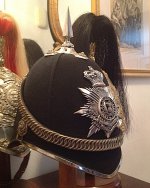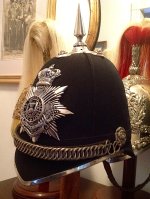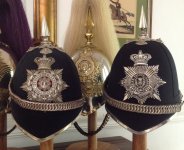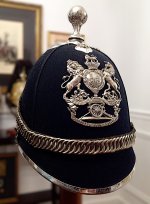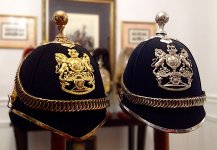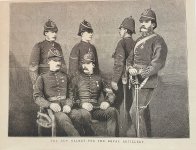Yeohelmetguy
Well-known member
Hello all,
These two Victorian era British Army home service helmets arrived this past week. Both are volunteer officer's home service helmets, hence their all-silver fittings and front helmet plates. The first home service helmet is an extremely rare helmet to a volunteer officer of the 2nd Midlothian and Peebles Rifle Volunteers. This regiment became the 4th Volunteer Battalion, The Royal Scots (Regiment). The helmet was worn from 1881 through 1888.
The second home service helmet is to a volunteer officer of the 1st Volunteer Battalion, The Royal Lancaster Regiment, again identified as a volunteer by the all-silver fittings and helmet plate and the secondary scroll under the regimental title scroll inscribed "1st Volunteer Battalion". This helmet was worn from 1881 through 1901. I have included a helmet plate, also from my collection, worn by the two regular battalions of The Royal Lancaster Regiment. Note that the regular battalion's helmet plate is in gilt.
Kind regards all,
David
2nd MIDLOTHIA AND PEEBLES RIFLE VOLUNTEERS:
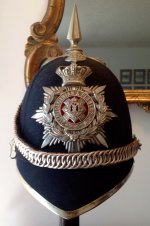
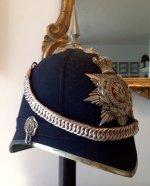
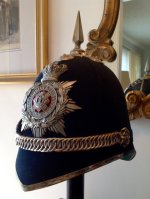
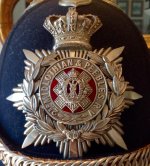
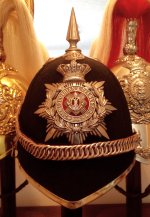
HOME SERVICE HELMET 1st VOLUNTEER BATTALION, THE ROYAL LANCASTER REGIMENT BELOW:
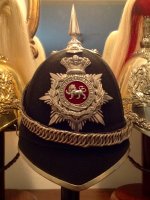
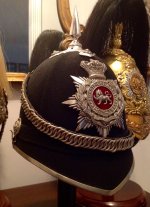
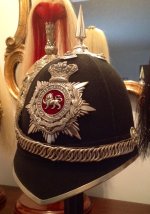
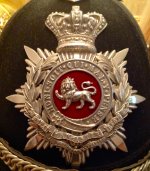
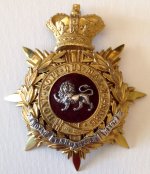
These two Victorian era British Army home service helmets arrived this past week. Both are volunteer officer's home service helmets, hence their all-silver fittings and front helmet plates. The first home service helmet is an extremely rare helmet to a volunteer officer of the 2nd Midlothian and Peebles Rifle Volunteers. This regiment became the 4th Volunteer Battalion, The Royal Scots (Regiment). The helmet was worn from 1881 through 1888.
The second home service helmet is to a volunteer officer of the 1st Volunteer Battalion, The Royal Lancaster Regiment, again identified as a volunteer by the all-silver fittings and helmet plate and the secondary scroll under the regimental title scroll inscribed "1st Volunteer Battalion". This helmet was worn from 1881 through 1901. I have included a helmet plate, also from my collection, worn by the two regular battalions of The Royal Lancaster Regiment. Note that the regular battalion's helmet plate is in gilt.
Kind regards all,
David
2nd MIDLOTHIA AND PEEBLES RIFLE VOLUNTEERS:





HOME SERVICE HELMET 1st VOLUNTEER BATTALION, THE ROYAL LANCASTER REGIMENT BELOW:







